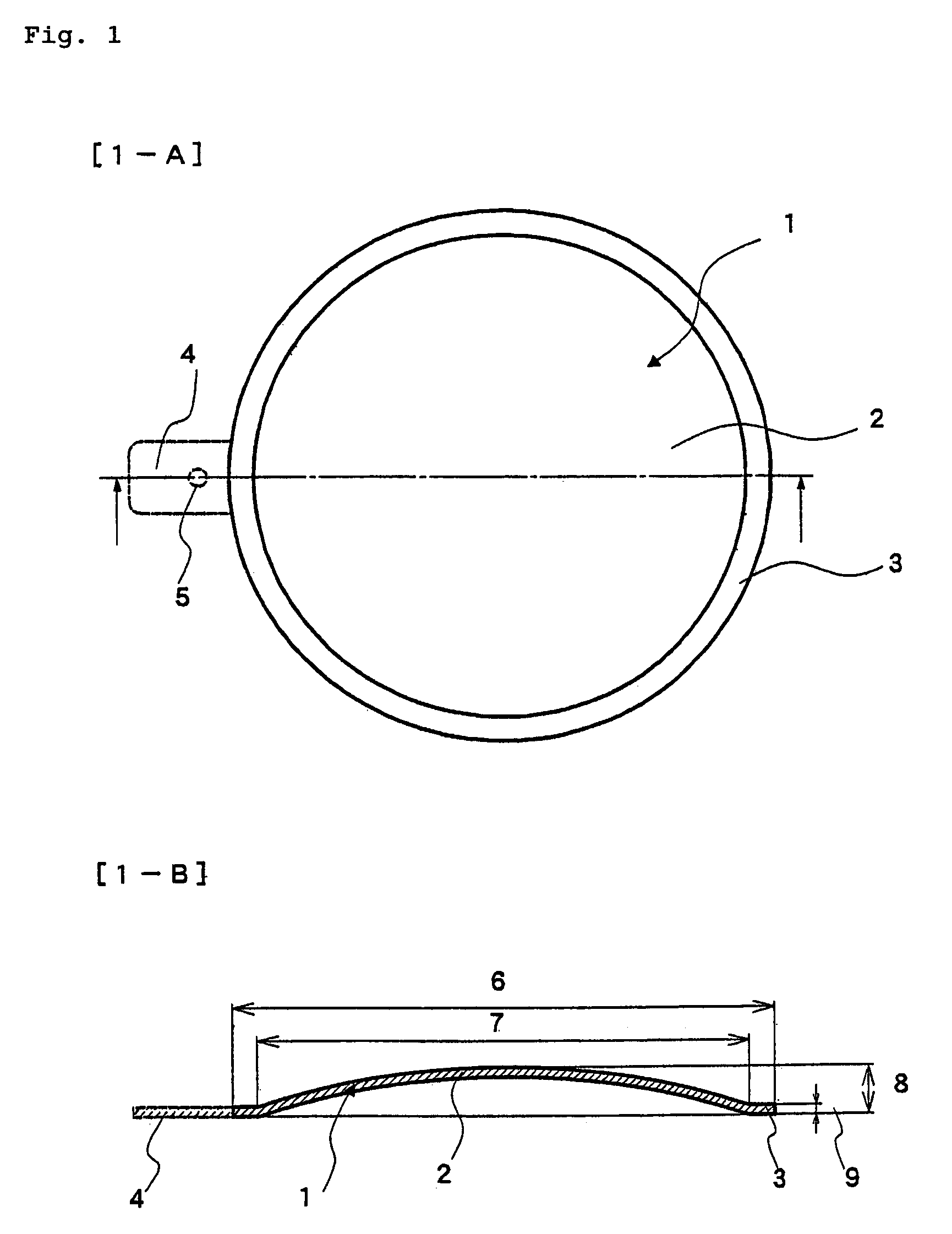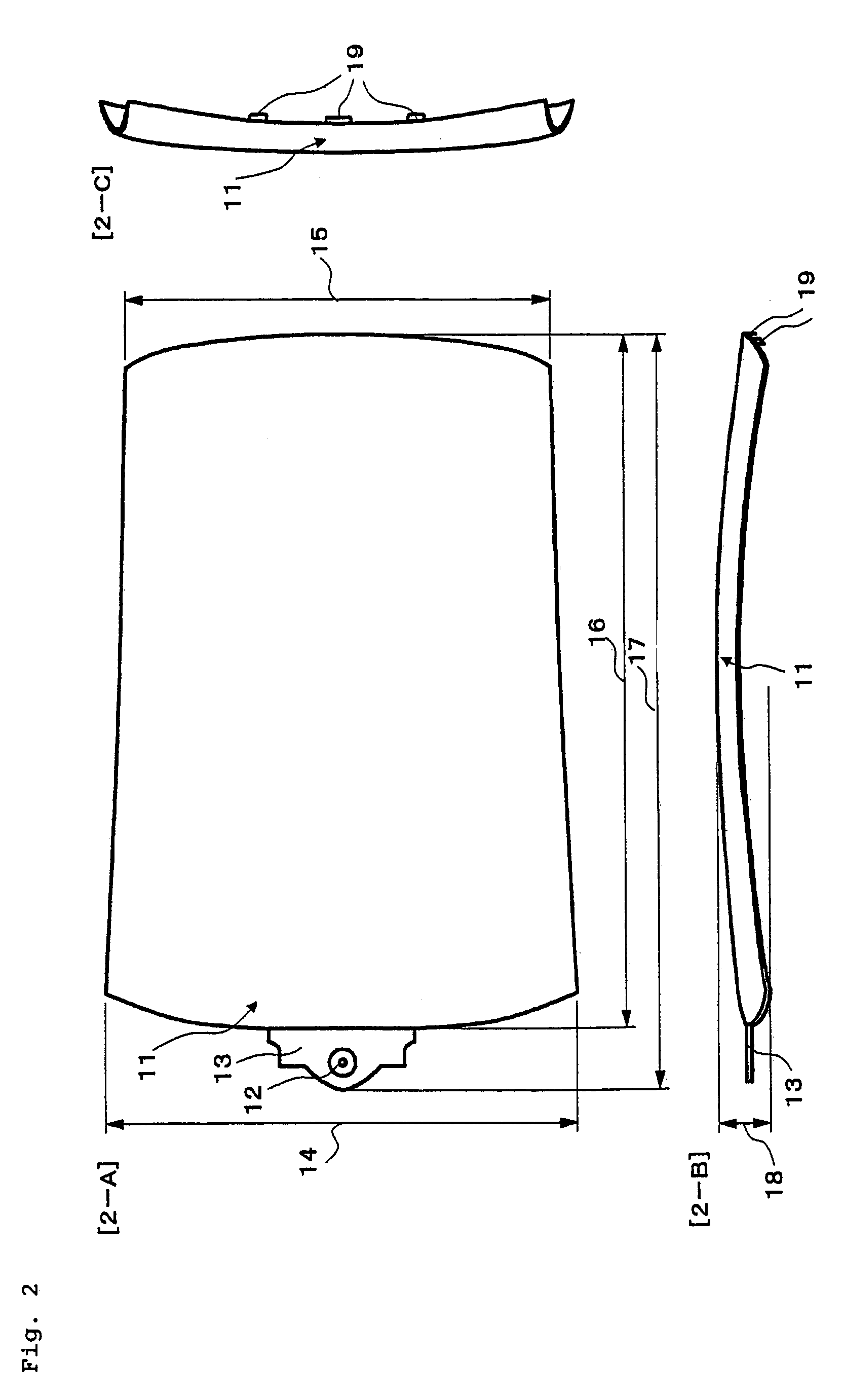Polycarbonate resin composition and molded articles thereof
a polycarbonate resin and composition technology, applied in the field of polycarbonate resin composition, can solve the problems of molding failure, inability to meet the needs of customers, and inability to meet the needs of customers, and achieve the effects of suppressing the production of a deposit, excellent heat stability and releasability, and excellent transparency
- Summary
- Abstract
- Description
- Claims
- Application Information
AI Technical Summary
Benefits of technology
Problems solved by technology
Method used
Image
Examples
examples
[0163]The following examples are provided to further illustrate the present invention. Evaluations were made by the following methods.[0164](1) Evaluation of a deposit on a metal mold: 200 plain head lamp lenses shown in FIG. 1 were continuously molded to evaluate the amount of a deposit on a metal mold after molding. Molding was carried out by using the SG26OM-HP of Sumitomo Heavy Industries, Ltd. at a cylinder temperature of 310° C., a mold temperature of 80° C., an injection rate of 50 mm / sec and a molding cycle of 70 sec. The collection of a deposit was carried out by removing an insert die (corresponding to the convex surface of a molded product) corresponding to the body portion of the molded product, installed on the movable side of the metal mold, from the metal mold after continuous molding, cleaning the surface of the metal mold with methylene chloride to remove the deposit from the surface of the metal mold, and volatilizing methylene chloride from the methylene chloride ...
referential example 1
[0194]A pellet was obtained in the same manner as in Example 1 except that a parting agent, ultraviolet light absorber and other additives were not blended with the polycarbonate resin (PC) used in Example 1. The obtained pellet was molded in the same manner as in Example 1. The evaluation results of the obtained molded product are shown in Table 3.
[0195]
TABLE 1ItemUnitC. EX. 1C. Ex. 2Ex. 1Ex. 2Ex. 3Ex. 4CompositionComponent APCPart by weight100100100100100100Component BB-1Part by weight0.30.30.30.30.30.5Component CC-1Part by weight0.10.10.10.05C-2Part by weight0.1OthersEPQPart by weight0.030.030.03HPPart by weight0.030.03CharacteristicDeposit on a metalAmountmg0.280.37*10.290.290.280.48properties ofmoldmolded productReleasabilityRelease load%1006469696780TransparencyHaze%0.40.40.40.40.40.4ColorYI value—0.50.60.60.50.40.5Resistance toΔYI value—0.30.50.30.20.10.1molding heatResistance toΔYI value—9.08.88.98.78.67.0ultravioletradiationProductibility—XX⊚⊚⊚⊚Ex. = Example,C. Ex. = Compar...
PUM
| Property | Measurement | Unit |
|---|---|---|
| water absorption coefficient | aaaaa | aaaaa |
| water absorption coefficient | aaaaa | aaaaa |
| water absorption coefficient | aaaaa | aaaaa |
Abstract
Description
Claims
Application Information
 Login to View More
Login to View More - R&D
- Intellectual Property
- Life Sciences
- Materials
- Tech Scout
- Unparalleled Data Quality
- Higher Quality Content
- 60% Fewer Hallucinations
Browse by: Latest US Patents, China's latest patents, Technical Efficacy Thesaurus, Application Domain, Technology Topic, Popular Technical Reports.
© 2025 PatSnap. All rights reserved.Legal|Privacy policy|Modern Slavery Act Transparency Statement|Sitemap|About US| Contact US: help@patsnap.com



